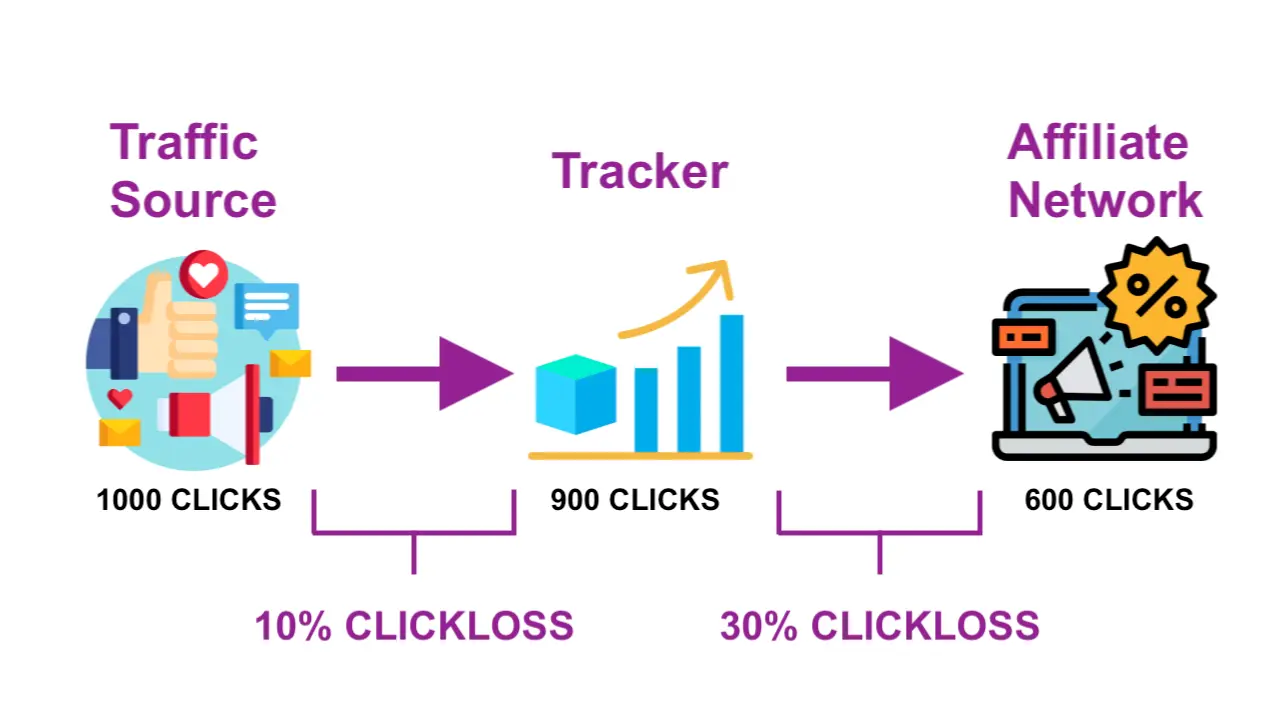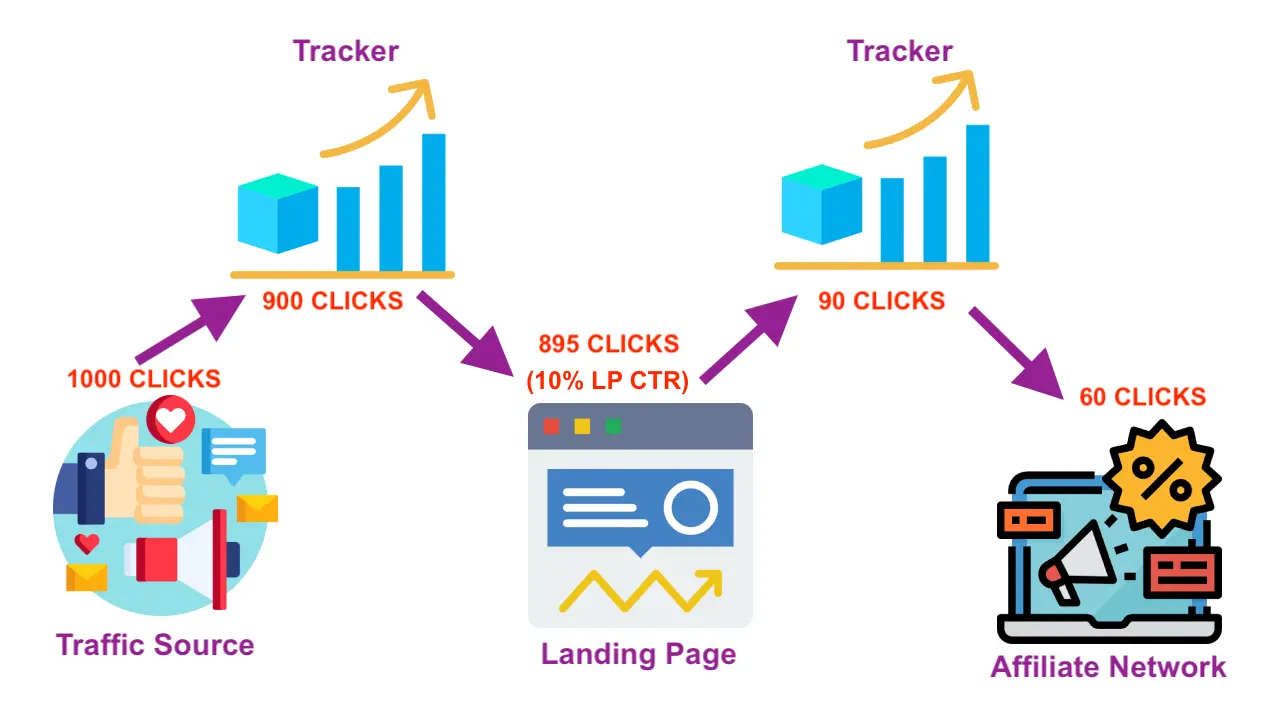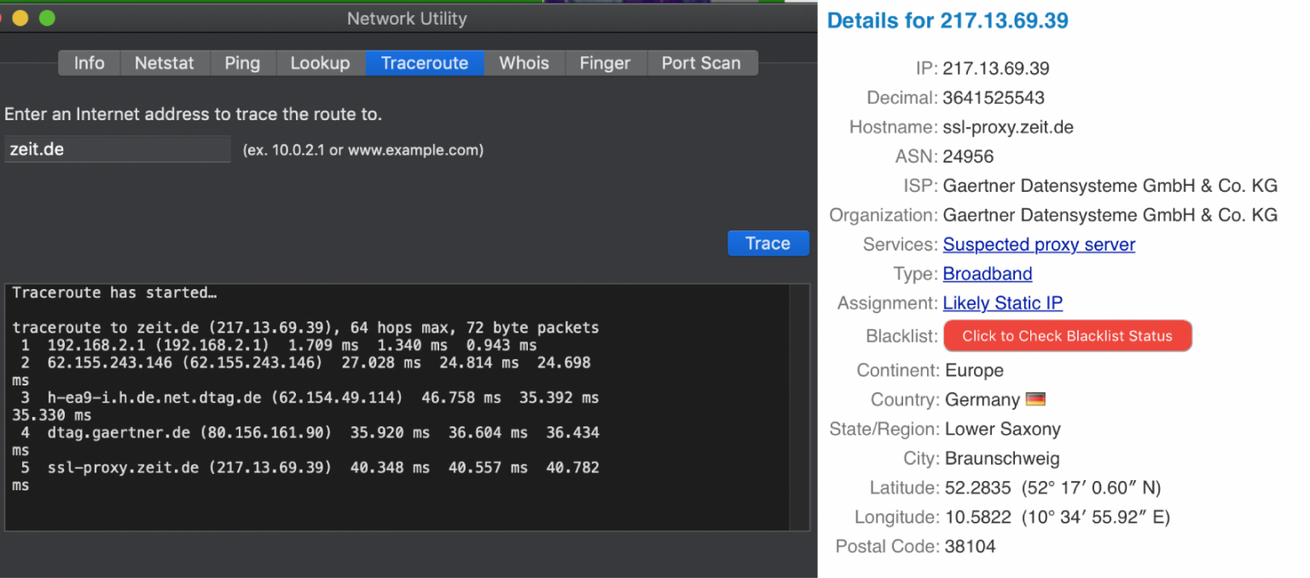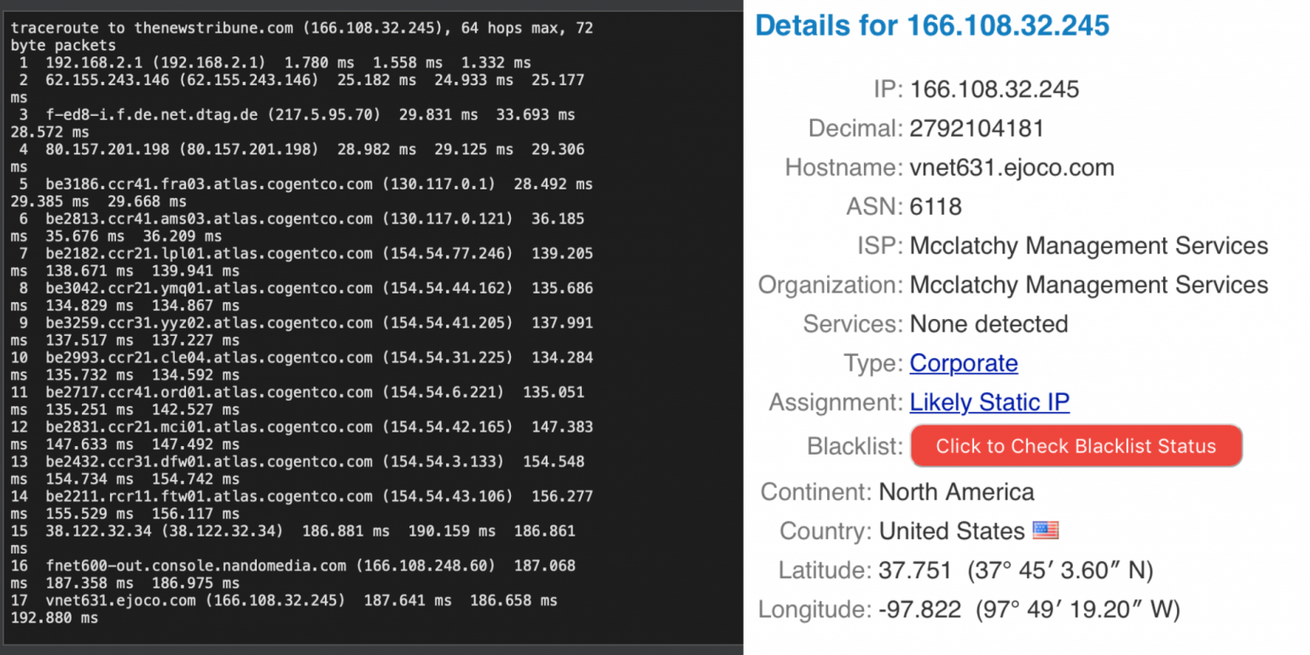Mega Guide to Clickloss in Affiliate Marketing
I first published this guide to in affiliate marketing on the AffLift Forum, where I regularly post high-quality content about affiliate marketing. It’s probably the best forum out there for affiliate marketing beginners. Read my AffLift review here.
If you’re using paid traffic to promote affiliate marketing offers chances are that some point sooner than later you’ll discover clickloss. Very few people understand what it is, what causes it, and what you can do it fix or improve it.
In this post, I’m going to explain all of those things so you can understand that click loss is actually very normal, but there are a couple of things you can do to minimize it so you get more for your money spent on traffic.
What exactly is Clickloss?
Clickloss is when you buy X amount of clicks, but less are reported in your tracker, and even less are reported in your affiliate network.
Let me show you a couple examples of this with graphics…
Here’s a direct link affiliate campaign:

You buy 1,000 clicks from your traffic source. Only 900 are registered by your tracker and then only 600 of those clicks are registered by your affiliate network.
You’re losing 10% of the clicks you bought when the user is redirected to your tracker, and from your tracker you’re losing 30% more clicks as you redirect the user to your affiliate network’s offer page.
In total you’re experiencing a 40% clickloss.
Here’s another example of an affiliate campaign flow with a landing page:

It’s very similar to the example above, but I wanted to put this in here to show you that there are more steps/redirects for the user to go though, which makes it even more complex.
At each point where a user can be redirected there is the potential for some loss of clicks. This is caused by many reasons…
What causes Clickloss?
There are really a lot of reasons that click loss happens. Some are just how the Internet works, some are caused by human behavior, some are caused by bad business partners and even pure bot traffic.
The Internet’s Functions
When you access anything online your request is redirected many times. First, you’ll probably go through your local ISP, which will then direct your request to a national provider, redirecting you though their complex system, and eventually you will land on the location you were looking for.
If you’re accessing a local website that’s hosted in your country/city you won’t have to go through as many redirects until you reach your final destination. But, if the website you are trying to access is located/hosted on the other side of the world you’ll have way more redirects to jump through before reaching it.
Let me show you with a couple examples of how many redirects a local website vs. a website on the other side of the world. BTW I’m located in Germany while performing these traceroutes.
Local site:

Website on the other side of the world:

Because of the way the Internet works, some websites will load fast and some slow… depending on where their servers are located. You can minimize clickloss by having a faster loading website in the country you’re advertising in by getting a server located in that country.
If you’re direct linking you’d want your tracker ideally located in that country as well, or as close to it as physically possible. Cloud-based trackers have locations all around the world, so chances are they are already pretty close to your users to ensure minimal clickloss.
Human Behavior and Traffic Types
The type of traffic you’re buying can also be more prone to clickloss.
Some types of traffic (pops, in-app ads, video ads, mobile banners) can have low intent because people might accidently click on these ads and then click the exit button on the landing/offer page before it has time to complete all of the necessary redirects.
If you were direct linking, it’s possible the user closes the page before your tracker can even register the click. Sometimes your tracker might register the click, but your affiliate network may not because their redirect could be too slow and the user closed it before the redirect had enough time to complete.
Some countries are also going to have higher clickloss than others due to their ancient infrastructure. Not much you can do about this.
Shady Business Partners
Affiliate marketing can be shady in many, many ways. But, that’s for a different topic.
Depending on the partner we’re talking about they might have different goals. For example, your traffic source makes money by selling you clicks. So they want to show the highest numbers possible, which might mean they sell you the same click from the same user even though you specified you would like to only show you ad to that user once in 48 hours. See this.
The affiliate network on the other hand would rather show lower amounts of clicks, so they might just count unique clicks instead of the total clicks. Less clicks = higher offer EPC/CVR = higher chance people run their offers. BTW, don’t even look at EPCs or CVR when picking offers.
Super shady networks might also just not count all your clicks because they’re shaving you, but that can also just happen by not crediting you for all the conversions you’re generating.
Total Bot Clickloss
Some bots are so dumb that they can’t even go through redirect chains. If this is the case your traffic source might count the click, but you’ll never see it in your tracker.
Sometimes your traffic source might be doing this on purpose for financial gain, but sometimes the traffic source isn’t even aware of it and it could be being done by the website owners themselves.
What is a normal % of Clickloss?
This will vary a lot depending on what countries you’re purchasing traffic in, but here are some guidelines.
- If clickloss is less than 10% I don’t care.
- If clickloss is greater than 10% it might be worth it to investigate what the issue is (tracker, lander, offer page, etc.)
- If clickloss is greater than 20% you should maybe start to sweat.
You can have very high clickloss (ie. 40%+) and still turn a profit. You may experience this in Asia or Africa.
How to fix Clickloss?
There are a couple of ways to fix a problem you might be having:
- Make sure your tracker and landing pages are loading as fast as possible. If you’re using a self-hosted tracker like Binom you should consider having your server located in a location that is close to where you primarily purchase traffic (you might consider a second server if you advertise in GEOs that are extremely far away from each other… ie South America and Asia). For landing pages you can make a VPS in your target GEO, or use Amazon S3 + Cloudfront like I do.
- Eliminate the high clickloss Targets/Sources from your campaign. In some cases certain website might be having a high clickloss percentage. This could be from bots, or something else. You just have to eliminate it and your clickloss for the entire campaign will drop to an acceptable level.
- Use a landing page instead of direct linking (see more here about why it’s a good idea). Some affiliate networks and/or advertisers have slow landing pages and/or redirects. If you have a correctly optimized landing page it will probably load faster than most bloated offer pages. With a landing page you can get a user more interested in the offer so they may be patient enough to wait for the slow redirects to complete instead of just close the page.
☝️ Remember: You can’t even completely eliminate because of how the Internet works. You will always experience it!
🌟 Bonus: If your traffic source supports a {cost} token then always expect your costs in your tracker to be different than they really are. There is nothing you can do about it except manually update your costs in your tracker. The only way you’ll have accurate costs in your tracker is if your tracker can connect to your traffic source API to pull the correct data.
